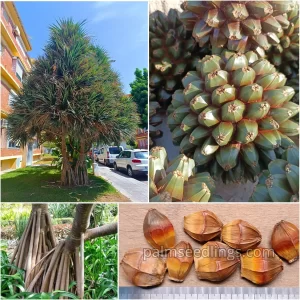Menu
4,00 € – 16,00 €
Product Details
Hesperaloe parviflora, commonly known as Red Yucca, is a perennial plant native to the southwestern United States and northern Mexico. With its arching, grass-like leaves and tall flower spikes, Red Yucca is a popular choice for xeriscaping and drought-tolerant gardens.
-Germination Rate: Very High
-Germination Time: Fast
-Germination Difficulty: Easy
-Growth speed: Slow
Select Quantity
*Shipping cost is calculated automatically in the cart after adding the products.
Hesperaloe parviflora (Red Yucca)
Habitat: Red Yucca typically thrives in arid and semi-arid environments, often found in rocky or sandy soils in deserts and scrublands. It is native to areas such as Texas, New Mexico, and northern Mexico, where it grows in full sun and can tolerate a range of soil types, including poor and well-drained conditions.
Outstanding Features: One of the most outstanding features of Hesperaloe parviflora is its striking flower spikes, which can reach heights of up to 5 feet. The tubular flowers are usually bright red or coral in color, attracting hummingbirds and other pollinators. The plant itself has long, narrow, arching leaves that form a rosette at the base, giving it a distinctive and graceful appearance.
General Appearance: Red Yucca typically grows to a height of 2 to 4 feet, with a similar spread. The leaves are long, slender, and linear, resembling those of traditional yuccas but are softer and less spiky. The flowers bloom on tall, erect spikes that emerge from the center of the plant, with individual flowers measuring about 2 inches in length. The plant’s foliage is evergreen, providing year-round interest, while the flower spikes bloom from late spring to early summer, often continuing into the fall.
Applications: Hesperaloe parviflora is widely used in landscaping for its ornamental appeal and drought tolerance. It is an excellent choice for xeriscaping, rock gardens, and low-water gardens, providing color and texture without requiring much maintenance. Additionally, Red Yucca can be planted in borders, mass plantings, or as a focal point in garden designs. Its ability to attract pollinators makes it beneficial for supporting local wildlife.
Adaptability: Red Yucca is highly adaptable to various environmental conditions. It thrives in full sun but can tolerate partial shade. The plant is extremely drought-tolerant once established and requires little to no supplemental watering, making it ideal for arid landscapes. Its resilience to heat, poor soils, and drought conditions makes it an excellent choice for low-maintenance, sustainable gardening.
| Weight | N/A |
|---|---|
| Quantity | 10 Seeds, 100 Seeds, 1.000 Seeds |

All rights reserved PalmseedlingsⓇ 2025.